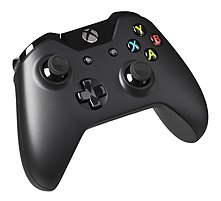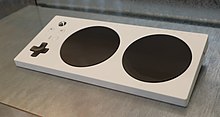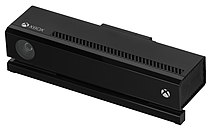Children video Channel10
help business grow audience share twitter facebook instagram youtube content Great ideas all categories available share now , welcome to all your valuable comments on our google blog
Sunday, January 19, 2025
Online Marketing for your business website get more sales & daily traffic new
You received this message because you are subscribed to the Google Groups "1TopReadys1" group.
To unsubscribe from this group and stop receiving emails from it, send an email to 1topreadys1+unsubscribe@googlegroups.com.
To view this discussion visit https://groups.google.com/d/msgid/1topreadys1/e355a9a2-ed96-4e21-9f61-4491de69bb0bn%40googlegroups.com.
90% Discount Offer for new year 2025 check without coupon code
You received this message because you are subscribed to the Google Groups "1TopReadys1" group.
To unsubscribe from this group and stop receiving emails from it, send an email to 1topreadys1+unsubscribe@googlegroups.com.
To view this discussion visit https://groups.google.com/d/msgid/1topreadys1/a59d05da-93fa-4b3e-b2fd-fffabea3a169n%40googlegroups.com.
Sunday, February 11, 2024
Electronics Computer
You received this message because you are subscribed to the Google Groups "2Top-manitotasy-Mirror1" group.
To unsubscribe from this group and stop receiving emails from it, send an email to 2top-manitotasy-mirror1+unsubscribe@googlegroups.com.
To view this discussion on the web visit https://groups.google.com/d/msgid/2top-manitotasy-mirror1/63edc225-b5d3-49bd-bafa-32adab75b4a9n%40googlegroups.com.
Install Software
You received this message because you are subscribed to the Google Groups "1TopReadys1" group.
To unsubscribe from this group and stop receiving emails from it, send an email to 1topreadys1+unsubscribe@googlegroups.com.
To view this discussion on the web visit https://groups.google.com/d/msgid/1topreadys1/f98777ee-e41d-49e1-9e45-3bee1d8fc7d4n%40googlegroups.com.
Saturday, April 29, 2023
Microsoft also announced the Xbox 360 Wireless Headset,
Microsoft also announced the Xbox 360 Wireless Headset, a first-party single-ear headset accessory designed for and released with the Xbox 360 console in November 2005. Special editions of the wireless headset were released with colors themed for Halo 3 (green/orange, September 2007),[106] the Xbox 360 S (black, 2010), and Halo: Reach (silver, September 2010).[107] It was replaced by the Xbox 360 Wireless Headset with Bluetooth in 2011, which could be used with the console (using the Xbox wireless protocol) or a phone (using Bluetooth).[108]
The initial revision of the Xbox One Wireless Controller (Model 1537) also included a 2.5mm monaural jack compatible with standard cellular phone headsets. Microsoft bundled the Xbox One Chat Headset with each console starting from launch in 2013; the headset was permanently wired to an interface module that plugged into the controller's expansion port and provided microphone mute and volume controls.[109] In addition, Microsoft released the Xbox One Stereo Headset in early March 2014, bundled with a Stereo Headset Adapter, which allowed players to listen to in-game audio blended with chat simultaneously. The Adapter connected to the controller's expansion port and headset jack, and the Headset connected to the Adapter through a 3.5mm plug. Prior headsets released with the Xbox and Xbox 360 were limited to voice chat only.[110] A white-colored special edition was released in fall 2016.[111] The next revision of the controller (Model 1697) replaced with 2.5mm jack with a 3.5mm jack.[112]
A new Xbox Wireless Headset was introduced in February 2021, targeted for use on the Xbox One, Xbox Series X/S, and Windows computers. The outer surface of each earcup is a rotary control; the right earcup controls overall volume, and the left earcup controls game/chat mix level.[113] It is equipped with both proprietary Xbox Wireless and Bluetooth radios, and could be connected to both simultaneously.[114] A corresponding Xbox Stereo Headset, which omits the wireless connections in favor of a standard 3.5mm plug and also omits the game/chat mix control dial, was introduced in August 2021 with a reduced price.[115]
You received this message because you are subscribed to the Google Groups "1TopReadys1" group.
To unsubscribe from this group and stop receiving emails from it, send an email to 1topreadys1+unsubscribe@googlegroups.com.
To view this discussion on the web visit https://groups.google.com/d/msgid/1topreadys1/CAForgrTZ_g528Z%3DOKZWCtTRVzfTmJXFLfUDHt8yA96QuXwnDBw%40mail.gmail.com.
Xbox One controller
Xbox One controller
The Xbox One console has a revised controller with forty improvements over the 360's controller. This new controller is built to work with Kinect. The Start and Back buttons are replaced with Menu and View buttons. It has impulse triggers that replace the regular triggers. The Xbox button still brings up the mini-guide as of recent dashboard versions, though in earlier iterations it brought up the main dashboard menu while leaving the game uninterrupted.
Xbox Series X and Series S Controller
The fourth generation Xbox Controller doesn't change much from the Xbox One controller, but the new wireless Xbox Controller does add a capture and share button, a hybrid d-pad, and better gripping on the bumpers and triggers.[78] The controller is also promised to be cross compatible with certain PC's and mobile devices.[79]
Xbox Adaptive Controller
The Xbox Adaptive Controller is a special controller designed for accessibility features for players. Besides being physically larger than typical controllers, it includes additional ports to allow other devices to be connected and mapped to other controller functions. The controller is not limited to just Xbox and Windows platforms but also is compatible with the PlayStation and Nintendo Switch.
Other accessories
Kinect
Kinect (stylized as KINECT) is a motion sensing input device by Microsoft for the Xbox 360 video game console and Windows PCs. Based around a webcam-style add-on peripheral for the Xbox 360 console, it enables users to control and interact with the Xbox 360 without the need to touch a game controller, through a natural user interface using gestures and spoken commands.[80] The project is aimed at broadening the Xbox 360's audience beyond its typical gamer base.[81] Kinect competes with the Wii Remote Plus and PlayStation Move with PlayStation Eye motion controllers for the Wii and PlayStation 3 home consoles, respectively. A version for Windows was released on February 1, 2012.[82]
Kinect was launched in North America on November 4, 2010,[83] in Europe on November 10, 2010,[84] in Australia, New Zealand and Singapore on November 18, 2010,[85][86][87] and in Japan on November 20, 2010.[88] Purchase options for the sensor peripheral include a bundle with the game Kinect Adventures and console bundles with either a 4 GB[89][90][91] or 250 GB[92] Xbox 360 console and Kinect Adventures.[89][90][91][92]
The Kinect claimed the Guinness World Record of being the "fastest selling consumer electronics device" after selling a total of 8 million units in its first 60 days.[93][94][95] 24 million units of the Kinect sensor had been shipped as of January 2012.[51]
Microsoft released Kinect software development kit for Windows 7 on June 16, 2011.[96][97][98] This SDK was meant to allow developers to write Kinecting apps in C++/CLI, C#, or Visual Basic .NET.[99][100]
Additional information on the Xbox One Kinect was released on June 6, 2013, including information on how to turn off the "always on" feature.[101]
Although featuring improved performance over the original Xbox 360 Kinect, its successor the Xbox One Kinect was subject to mixed responses. It was praised for its wide-angle, its fast response time and high-quality camera. However, the Kinect's inability to understand some accents in English was criticized. Furthermore, controversies surround Microsoft's intentional tying of the sensor with the Xbox One console despite the initial requirements for the sensor being plugged in at all times having been revised since its initial announcement. There have also been a number of concerns regarding privacy.
Headsets
When the Xbox Live online service was launched in 2002, the Xbox Communicator headset was included with the Live Starter Kit.[102] The Communicator, which enabled in-game voice chat, consisted of a wired headset and an interface module. The module plugged into the controller's top expansion slot, and the headset plugged into the module; the interface module was equipped with a dial to control volume and a button to mute the microphone.[103] The headset socket on the module was a standard 2.5mm TRS audio jack with monaural input and output, compatible with cellular phone headsets.
Xbox 360 controllers featured a built-in monaural 2.5mm TRS jack also compatible with standard cellular phone headsets, allowing players to reuse the Xbox Communicator headset and chat on Xbox Live without a separate interface module.[104] The premium console bundle included a wired Xbox 360 Live Communicator headset with grey and white cosmetics matching the console, which also was available separately;[105] the wired headset connected to the audio jack on the bottom of the controller through a wide plug that included mute and volume controls. An updated Xbox 360 Headset was released in 2010 with black cosmetics, bundled with the Xbox 360 S; for the revised wired headset, the mute/volume controls were moved to a position inline along the cable.
You received this message because you are subscribed to the Google Groups "1TopReadys1" group.
To unsubscribe from this group and stop receiving emails from it, send an email to 1topreadys1+unsubscribe@googlegroups.com.
To view this discussion on the web visit https://groups.google.com/d/msgid/1topreadys1/CAForgrR15R9zmHkwnbW7SsBM1xngvRGYs8xev5dUSkycj6fwcw%40mail.gmail.com.
Friday, April 28, 2023
Xbox Wire
Xbox Wire
Xbox Wire is Xbox's news blog, launched by Microsoft in May 2013 in preparation for the announcement of the Xbox One.[71] It was Microsoft's first Xbox-focused blog since it shut down Gamerscore in early 2009.[72] In March 2022, a Japanese-language version of the site was published as part of Microsoft's focus on the Japanese gaming market.[73]
Software
The main interface for all four generations of Xbox has been the Xbox Dashboard, which allows users to manage games stored on the console, play media, and access system settings. Since 2002, the Dashboard has been integrated with Xbox Live that provides online functionality and storefront options. Though the software for the original Xbox and the Xbox 360 was originally built on a heavily modified Windows 2000 operating system, the software since the Xbox One has used a Windows-based system (first Windows 8, now Windows 10) that allows for easy of compatibility between the console and desktop applications.
Xbox Family Settings App
In May 2020, Xbox presented a preview version of an app that allows parents and guardians to set daily limits for their children's playing time, provides weekly activity reports, filters out age-restricted games, and places limits on online communication. This is the attempt of Microsoft, Xbox's owner, to promote a message of responsible gaming. The full release is expected in the end of 2020 or later.[74]
Controllers
Xbox controller
Released in 2001, the Xbox control pad was the first controller made for the original Xbox. The Xbox controller features two analog sticks, a pressure-sensitive directional pad, two analog triggers, a Back button, a Start button, two accessory slots and six 8-bit analog action buttons (A/Green, B/Red, X/Blue, Y/Yellow, and Black and White buttons).[75] The original Xbox controller (nicknamed the "Fatty"[76] and later the "Duke"[77]) was the controller initially bundled with Xbox systems for all territories except Japan, which received a more compact controller called the Controller S. The Controller S was later made the standard included controller in all territories.
Xbox 360 controller
Released in 2005, the Xbox 360 controller for the Xbox 360 succeeded its predecessor. A standard Xbox 360 controller features eleven digital buttons, two analog triggers, two analog sticks and a digital D-pad. The right face of the controller features four digital action buttons; a green "A" button, red "B" button, blue "X" button and yellow "Y" button. The lower right houses the right analog stick, in the lower left is a digital D-pad and on the left face is the left analog stick. Both analog sticks can also be "clicked in" to activate a digital button beneath. In the center of the controller face are digital "Start", "Back" and "Guide" buttons. The "Guide" button is labelled with the Xbox logo, and is used to turn on the console/controller and to access the guide menu. It is also surrounded by the "ring of light", which indicates the controller number, as well as flashing when connecting and to provide notifications. The left and right "shoulders" each feature a digital shoulder button, or "bumper", and an analog trigger.
You received this message because you are subscribed to the Google Groups "1TopReadys1" group.
To unsubscribe from this group and stop receiving emails from it, send an email to 1topreadys1+unsubscribe@googlegroups.com.
To view this discussion on the web visit https://groups.google.com/d/msgid/1topreadys1/CAForgrStH6SHyu%3DAH0Noo3_RMmjKkYyBVsG3WmMx07k7hqad-g%40mail.gmail.com.
Games
Games

Each console has a variety of games. Most games released on the original Xbox are backwards compatible and can be played directly on its successor, Xbox 360. Backward compatibility with Xbox 360 titles was added to Xbox One
Games using the Xbox and Xbox Live brands have also been released for Microsoft Windows, Windows Phone, Android, and iOS devices. Xbox games can also be played using the Xbox Cloud Gaming streaming service.
Services
Microsoft has used the razor and blades model to sell the family of Xbox consoles, selling the console at or below the price of its manufacturing costs, while earning revenue from licensing fees it collects from publishers and developers and from its services offered to players.[62]
Xbox network
Xbox network (formerly known as Xbox Live) is an online service with over 65 million users worldwide (as of July 2019).[63] It comprises an online virtual market, the Xbox Games Store, which allows the purchase and download of games and various forms of multimedia. Online gaming on the Xbox first started on November 15, 2002, worldwide. The service is still active and continues to be played by gamers.
Xbox Games Store
Xbox Games Store is an online marketplace made for Microsoft's Xbox One and Xbox Series X|S consoles. The marketplace is where you can buy games and movies through digital download.
Xbox SmartGlass
Xbox SmartGlass is a companion application for Xbox 360 available for Windows 8, Windows 10, Windows Phone, iOS, Android (version 4.0 and above),[64] and Windows Server 2012. It was announced by Microsoft during E3 2012 and released on October 26, 2012, coinciding with the release of Windows 8.[65] It connects with the Xbox 360 and allows more interactive entertainment, allowing mobile devices to potentially serve as second screens and remote controller. Currently[when?] Windows 8 and Windows RT Tablets and PCs, Windows Phone (7.5 and 8) iOS devices, and Android smartphones (4.x) are compatible with SmartGlass,[66] providing information such as Halo 4 stats and Forza Horizon GPS.[67] Users of Windows Server 2012 can currently download the application from the Windows Store after installing the Windows Desktop Experience feature in the Server Manager.[68]
Xbox Game Pass Cloud Gaming
Xbox Game Pass Cloud Gaming[69] (codenamed xCloud during development) is the Microsoft's Xbox cloud gaming streaming service.
Content filter
In 2019, Microsoft released a content filtering to stop swearing and toxicity in online gaming. The service enables players to report messages, Gamertags, photos, and any other toxic content on its platform.[70]
Xbox Game Pass
Xbox Game Pass is a subscription service from Microsoft for use with its Xbox One and Windows 10. The Xbox Game Pass grants users access to a catalog of games from a range of publishers for a single monthly subscription price. The service was launched on June 1, 2017.
You received this message because you are subscribed to the Google Groups "1TopReadys1" group.
To unsubscribe from this group and stop receiving emails from it, send an email to 1topreadys1+unsubscribe@googlegroups.com.
To view this discussion on the web visit https://groups.google.com/d/msgid/1topreadys1/CAForgrRs755e_NGzLnUMd%2BjOvaoK8J07Mn_e%2Bn8NVvtK5UX8Og%40mail.gmail.com.











